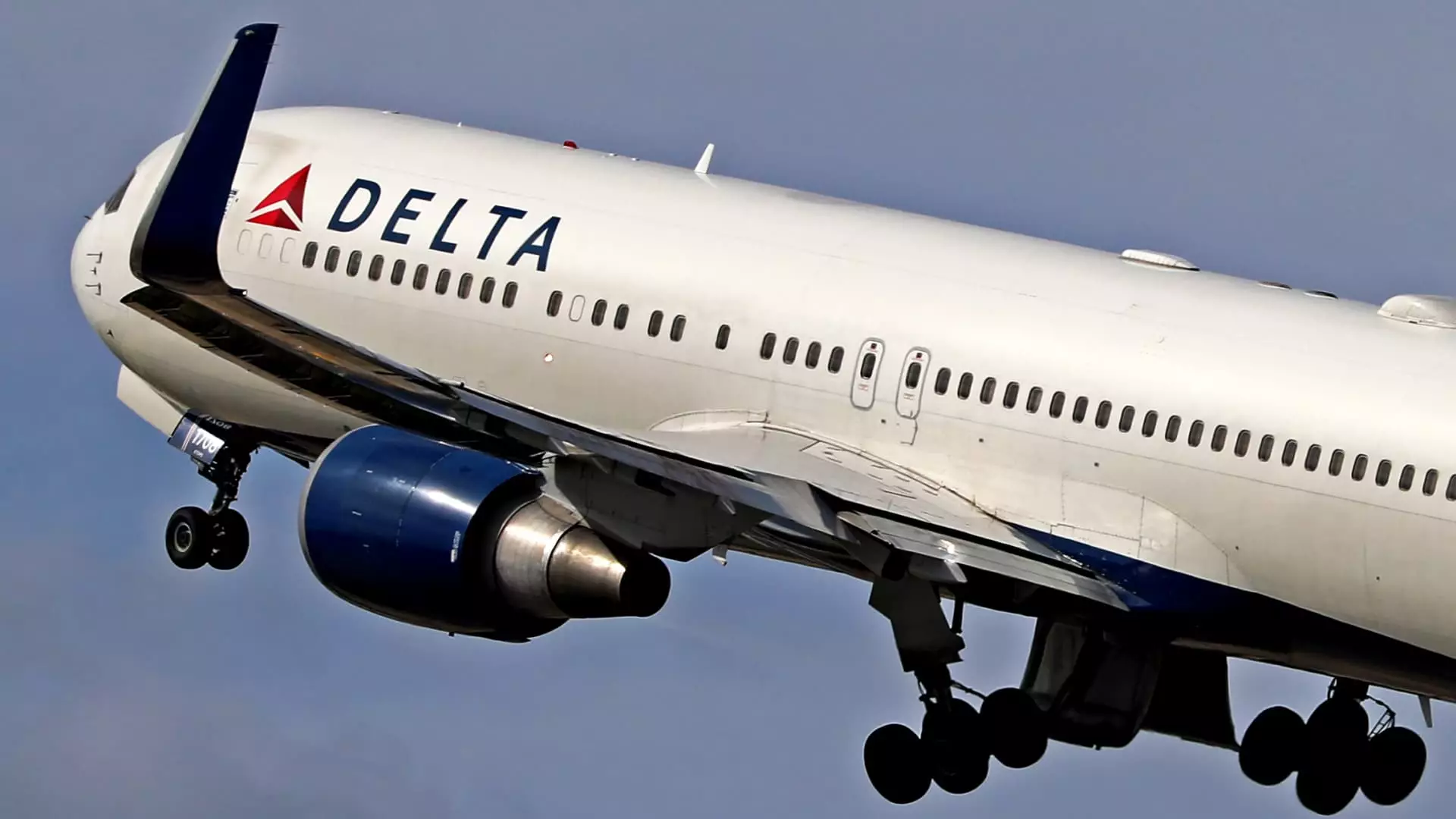The recent 18% plunge in airline stocks has sent shockwaves across the financial landscape, highlighting a stark turning point for an industry that once thrived in the aftermath of pandemic restrictions. Concerns over diminishing travel demand have been compounded by external economic pressures such as looming tariffs and an unsettling decline in consumer confidence. While the airline sector had hoped for a robust recovery, the current trajectory suggests that optimism may be misplaced, marking this period as one of the most turbulent in recent history.
The Delta Dilemma
Delta Air Lines, historically viewed as the bellwether of American carriers, has experienced a troubling about-face. A recent downgrade by Jefferies, which reduced Delta’s hold rating and slashed its price target dramatically, has cast doubt on the airline’s future performance. Following a revision of its first-quarter guidance, Delta executives were optimistic regarding revenue streams from higher-end services and credit partnerships, yet this confidence seems increasingly at odds with market realities. The bank’s analysis suggests that Delta might significantly lower its 2025 forecasts, a harbinger of a possible trend that could envelop other airlines as consumer spending habits shift dramatically.
The Ripple Effect Across the Sector
The fallout is not isolated to Delta. American Airlines and Southwest Airlines have similarly felt the weight of negative sentiment, with both companies facing downgrades from analysts. American’s shares dropped by 2%, but it was Southwest that truly felt the sting with a more than 5% decline. United Airlines stands out as Jefferies’ only buy recommendation, a rare glimmer of hope in a dismal landscape, even as its price target was considerably lowered. This juxtaposition creates a puzzling narrative where even relatively strong performers are not immune to market apprehensions.
Consumer Confidence and Spending Patterns
A recent report from the Bank of America Institute sheds light on alarming spending trends. While overall household spending has incrementally increased, airline expenditures have nosedived by 7.2%. This decline may well correlate with waning consumer confidence, culminating in indecision regarding travel plans. Investors must grapple with the unsettling notion that this dip in spending is a reflection of deeper anxieties concerning economic stability. Factors such as poor weather and a late Easter may play a role, but they hardly mask the underlying issue of consumer trepidation about discretionary spending.
The Broader Economic Landscape
The NYSE Arca Airline Index’s staggering decline serves as a barometer for a wider economic malaise. The 18% drop in the first quarter not only eclipses the S&P 500’s decline but also delineates a troubling trend that the airline industry must confront head-on. It becomes crucial to ask whether the industry can reinvent itself to not just weather this storm, but emerge from it fortified and more adaptive to the sentiments of the modern traveler. The challenges are undeniable, and the implications for future profitability could reverberate far beyond balance sheets, affecting employment and economic dynamics in entire sectors linked to travel and leisure.

